La Cornouaille is the French word for Cornwall. It is situated in the southwest of Brittany near Quimper. The coast is home to sandy beaches and granite cliffs. Some locals still speak the Breton language, which is very close to the Welsh language.
Speaking Breton is partly due to the Roman invasions, during which time people fled to Wales and southwest England. They then came back to settle after the collapse of the Roman Empire in 400 AD. Within La Cornouaille lies Le Pays Bigouden, an area that once flourished and is still pretty active thanks to its fishing harbours and fleet. We stayed for a fortnight in one of the fishing villages, Saint Guénolé.
Ice and fishing
Saint Guénolé fishermen specialise in sardine and herring fishing during the summer season in La Cornouaille. Although big sardines are getting scarce due to over-exploitation of resources and global warming, the harbour is still active.
Speaking with locals, they say 90 percent of the fishing fleet will be destroyed in the next few years. Fishermen will be subsidised to destroy their boats. That’s a pretty sad reality, as I remember when we last stayed in the area in the 2010s, it was a flourishing industry. However, this June we were in the middle of what may be one of the last sardine seasons.
A typical fishing day starts with ice produced at the local factory. Every weekday morning, plastic containers are filled with ice and the stocked in refrigerators until the evening. In the evening, fishermen come back to collect it and load it into the holds on their boats.
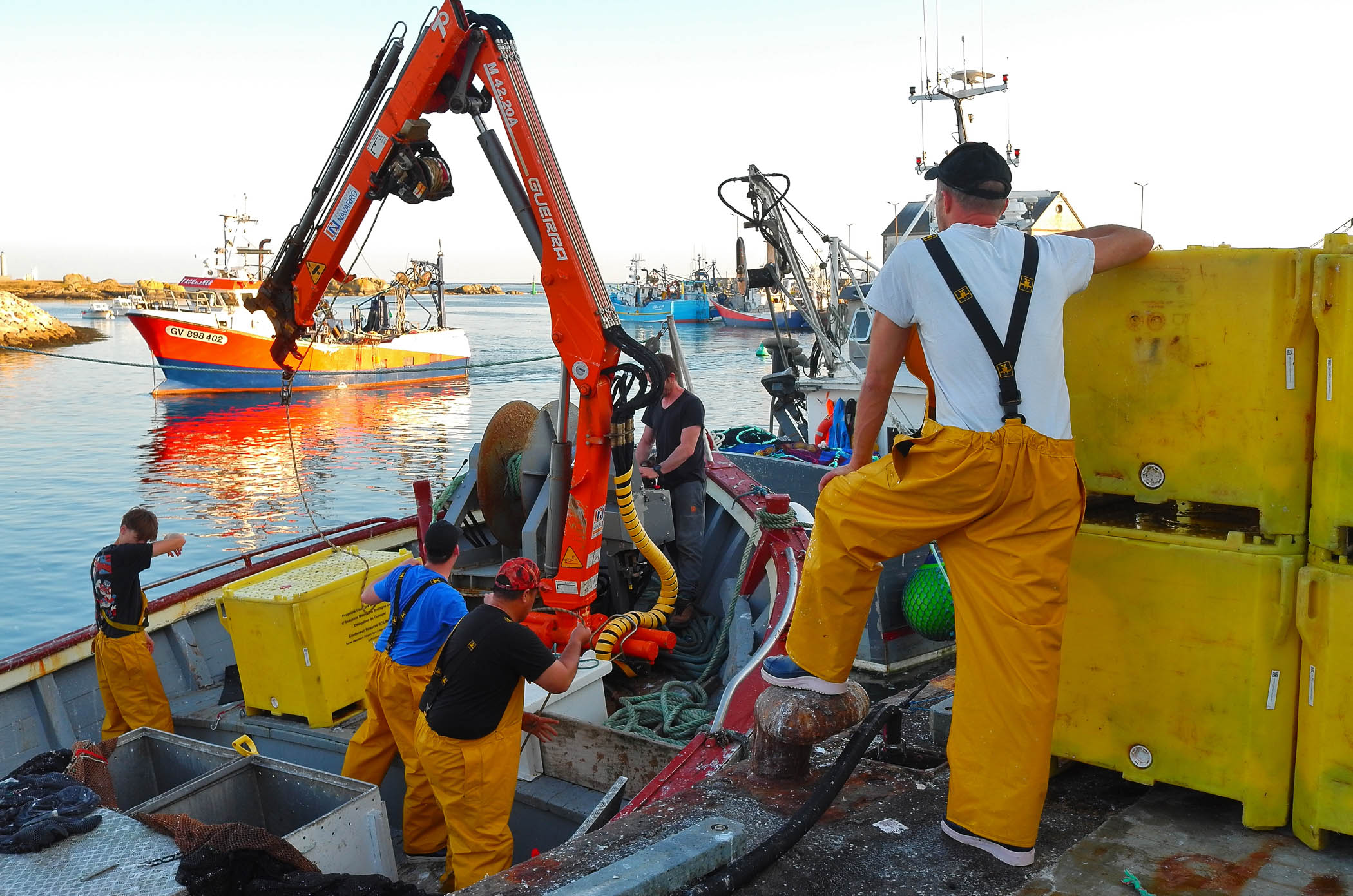
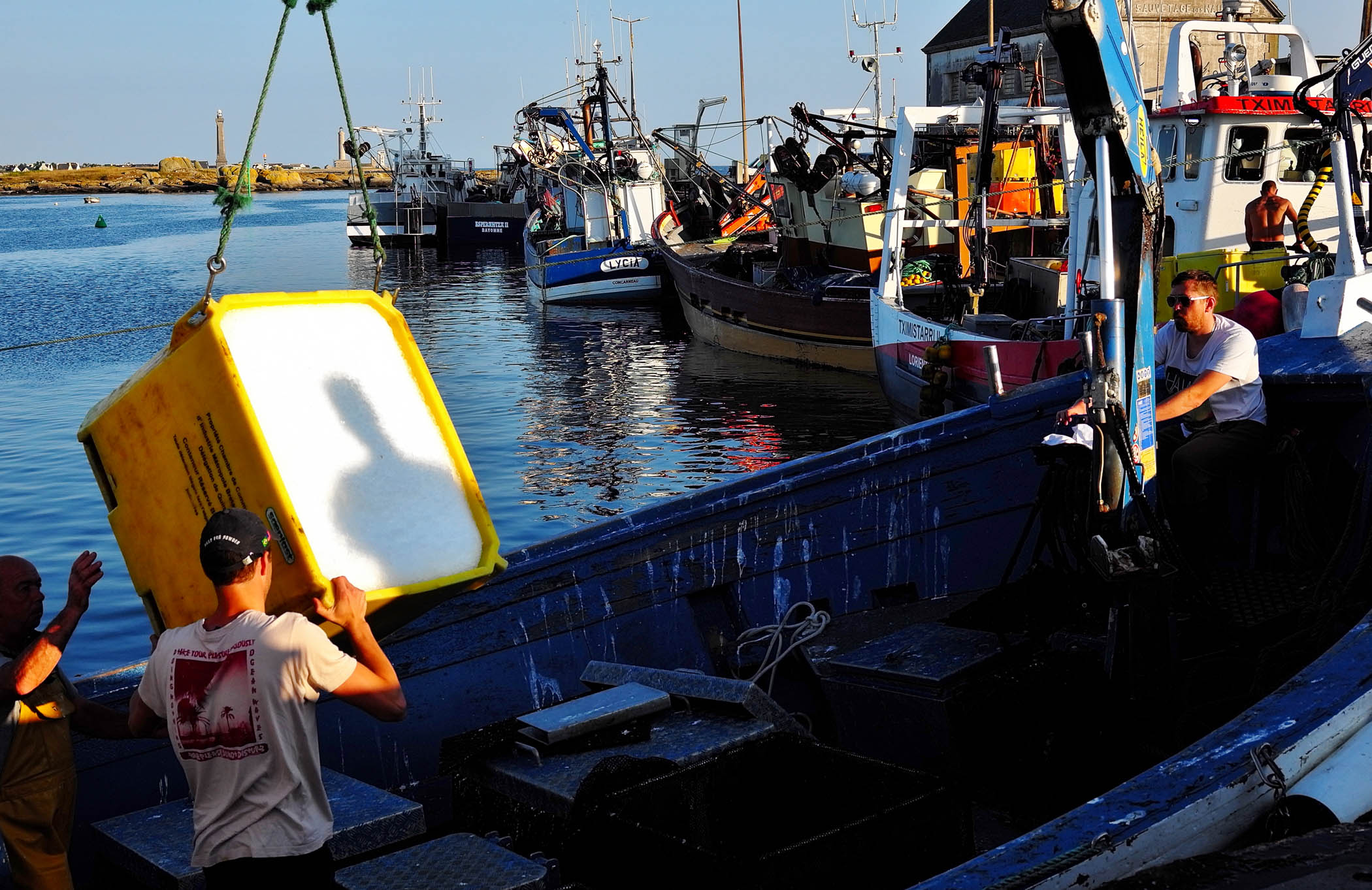

The fleet usually leaves at 9.30 pm and comes back between 2 and 3 am when I’m fast asleep. The sardines are sold at auction in the morning to the various fish processing factories. And the ones that don’t get sold are left for the gulls to feast on.
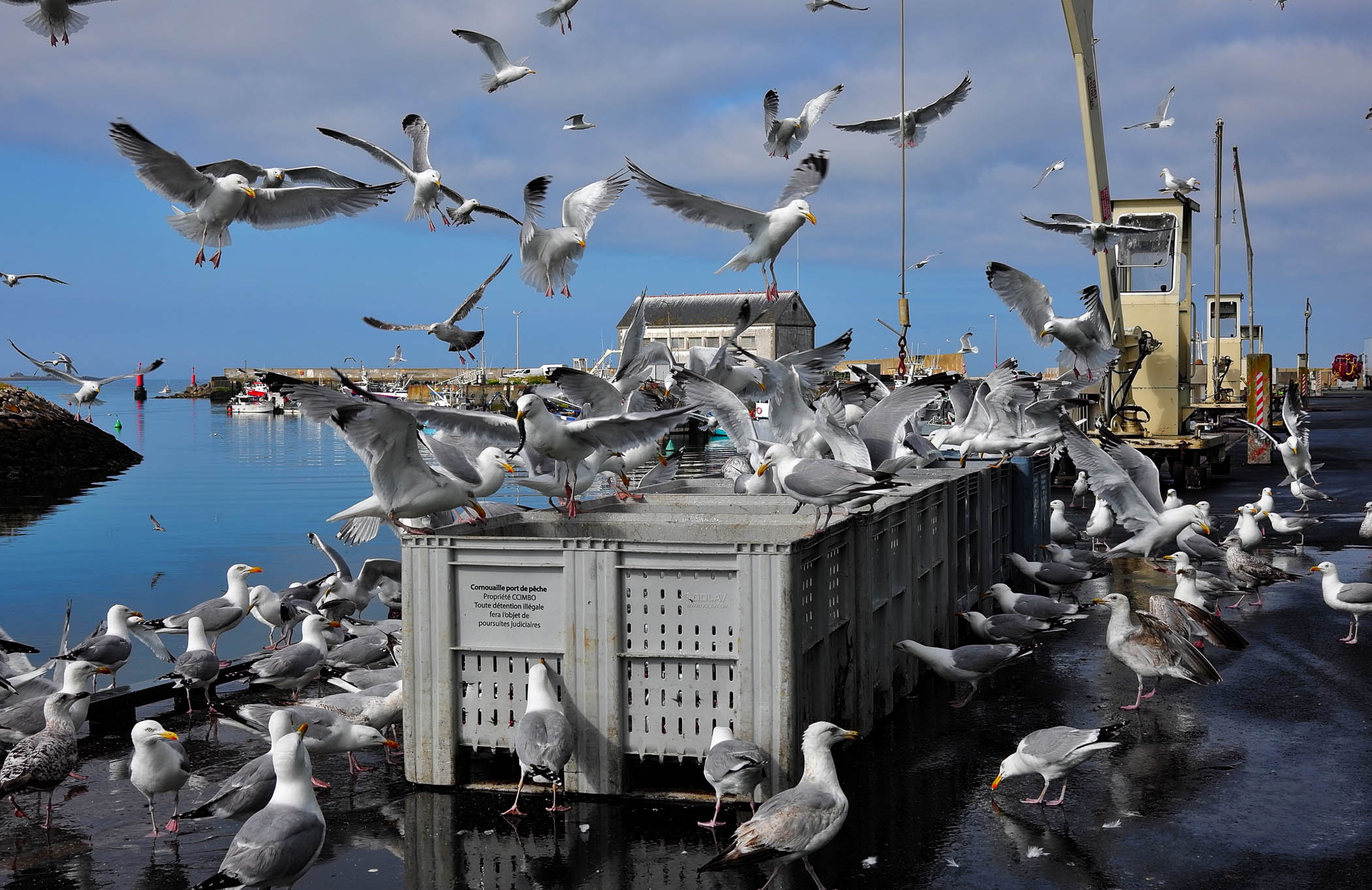
Fishermen in La Cornouaille
I spent quite a few evenings by the harbour watching and photographing what was going on. Occasionally I wish I were able to fly, to change my perspective. I met with quite a few of the fishermen to discus fishing, politics, and photography. I often sent them the photo files I took when I got back home.
Jerome works on a forklift every evening bringing the ice to the boats. Ilme is a Turkish fisherman who immigrated to France many years ago. He lives about 17 miles (ca. 27 km) from the harbour and works as a sailor on different fishing boats throughout the year along this part of the coast of Brittany in La Cornouaille.
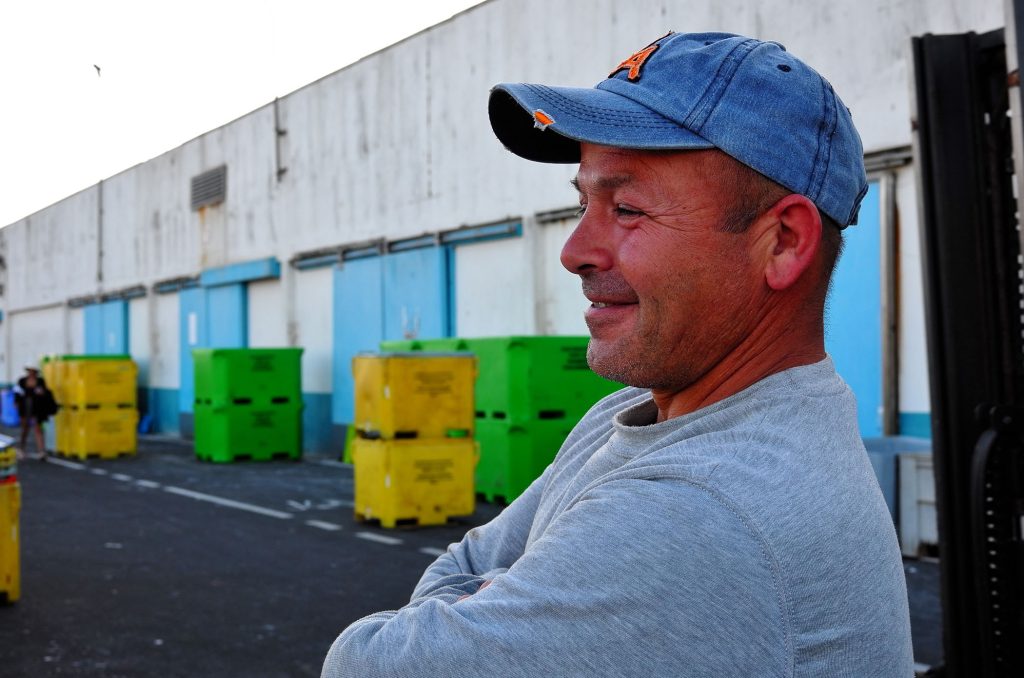
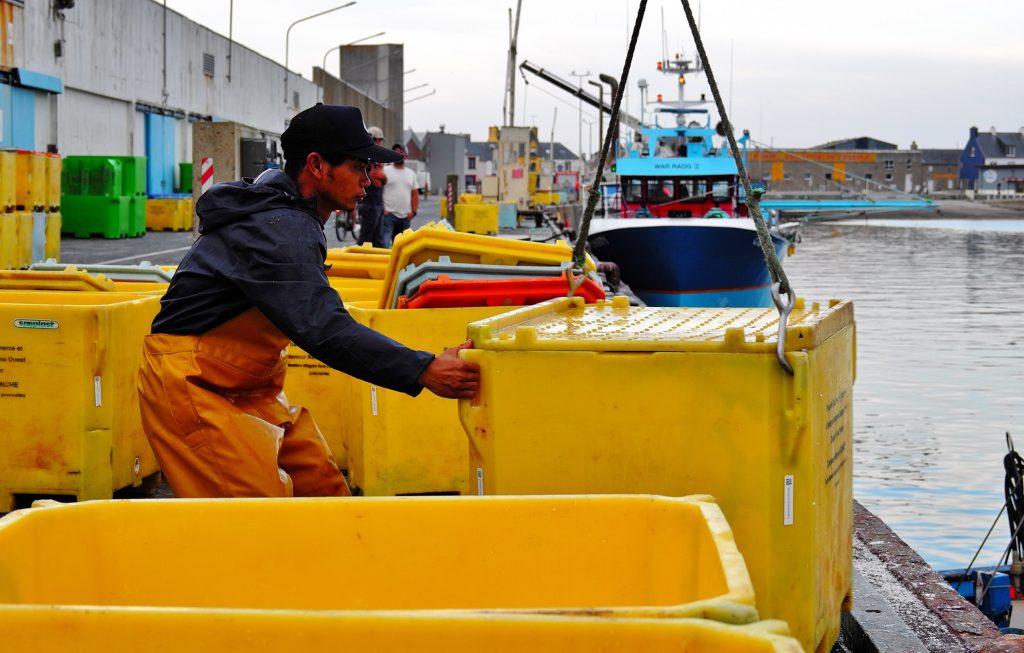
The first time we met, seeing my camera, he told me “Take my picture, I’m photogenic.” He was a really kind and good-humoured person. Yet, he was truly worried with the situation in the Middle East as Turkey has got borders with Syria and Iran. He feared for his family. The last image is from a sailor from the Philippines. Oddly enough, one of the boat’s entire crew was Filipino.
Seaweed
Whether clinging to moorings, rocks or stranded on beaches, I have always been fascinated by seaweed. Further north in Brittany, they gather seaweed and sell it to the pharmaceutical or beauty industry. Some of it is also edible.
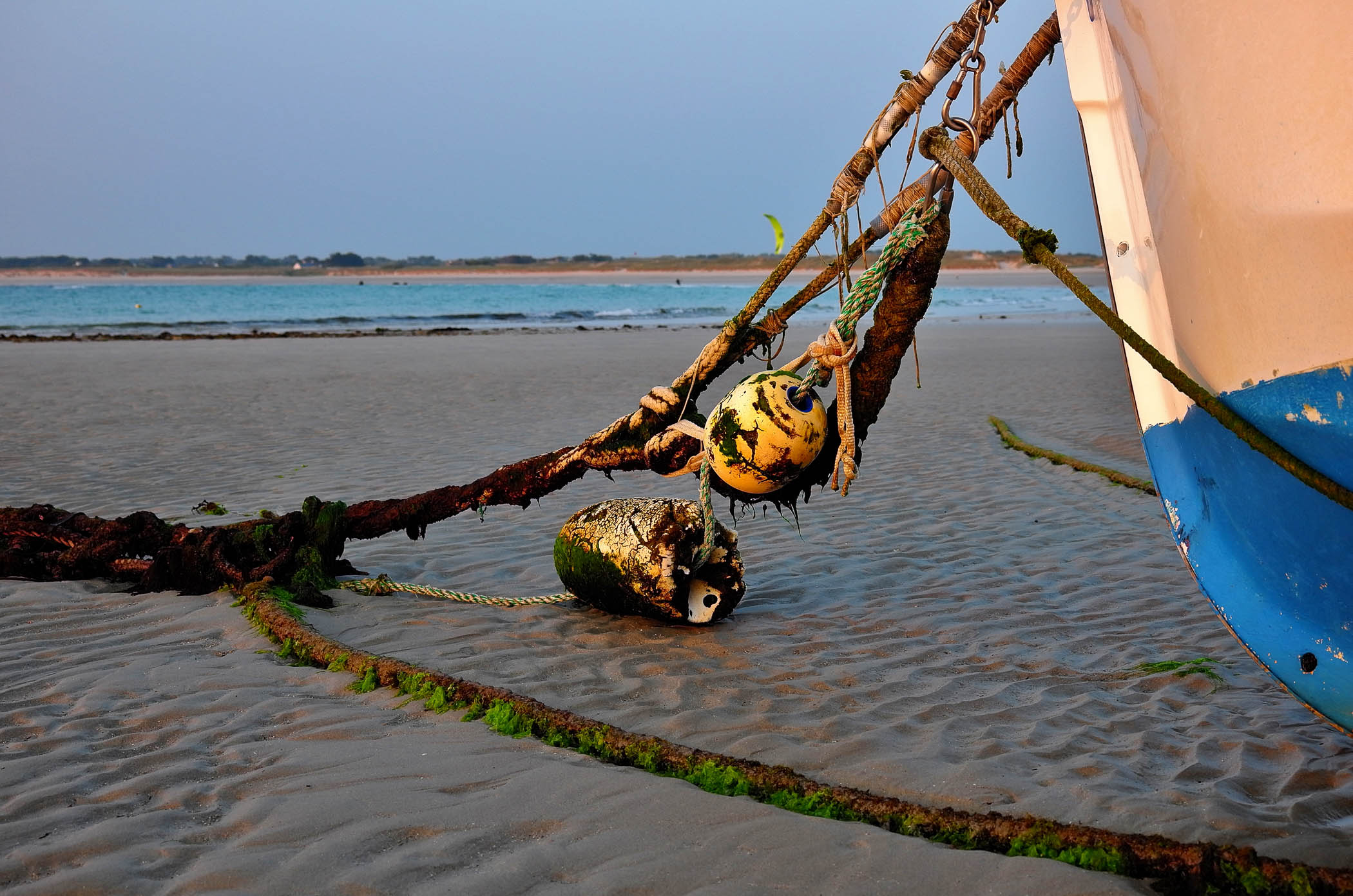
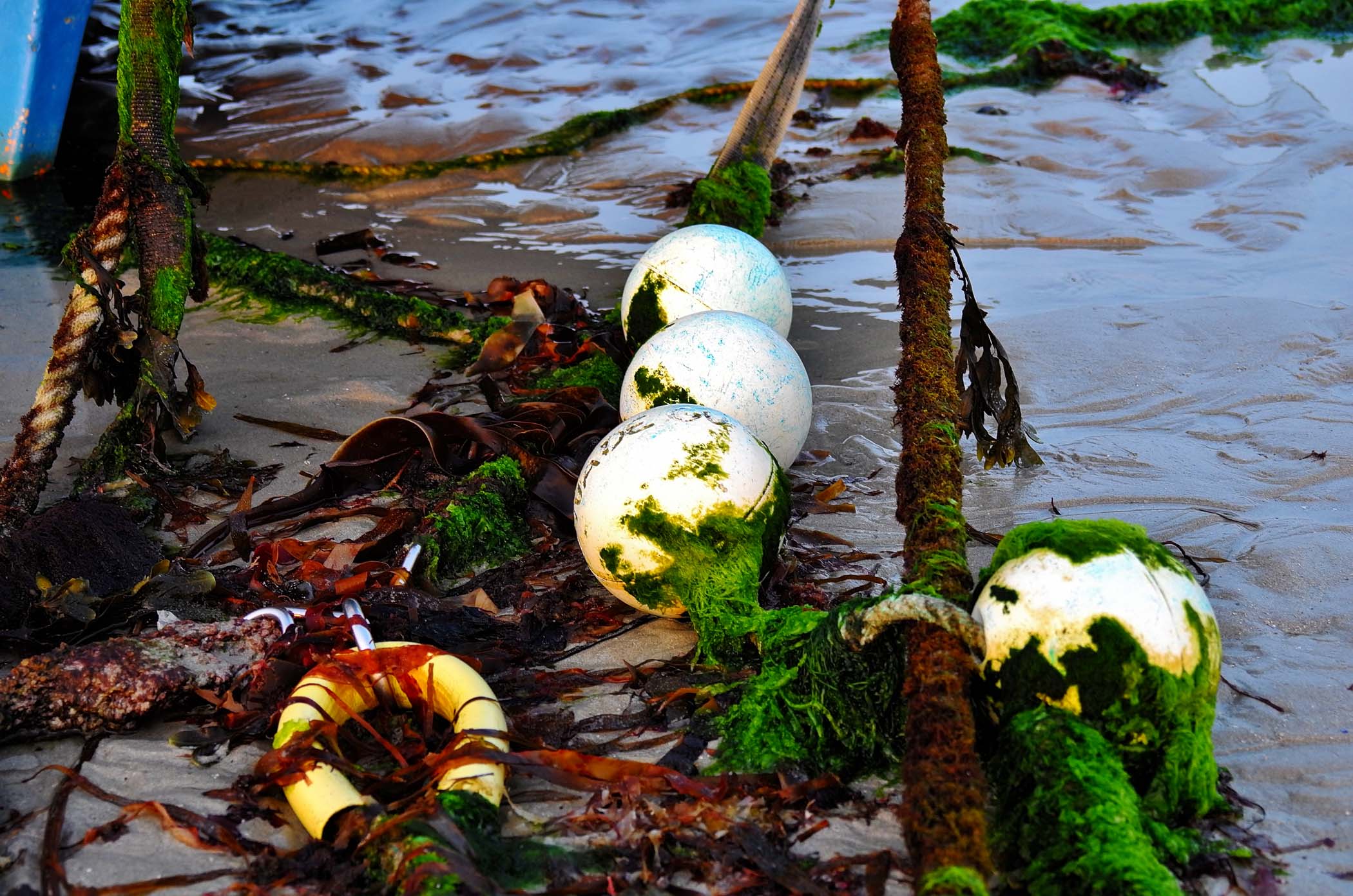
It is sold to chefs at local restaurants as well. The seaweed found on beaches is ripped from the deep by trawler nets or by breaking waves. I like to capture the patterns it creates on ropes, buoys or just on sand.
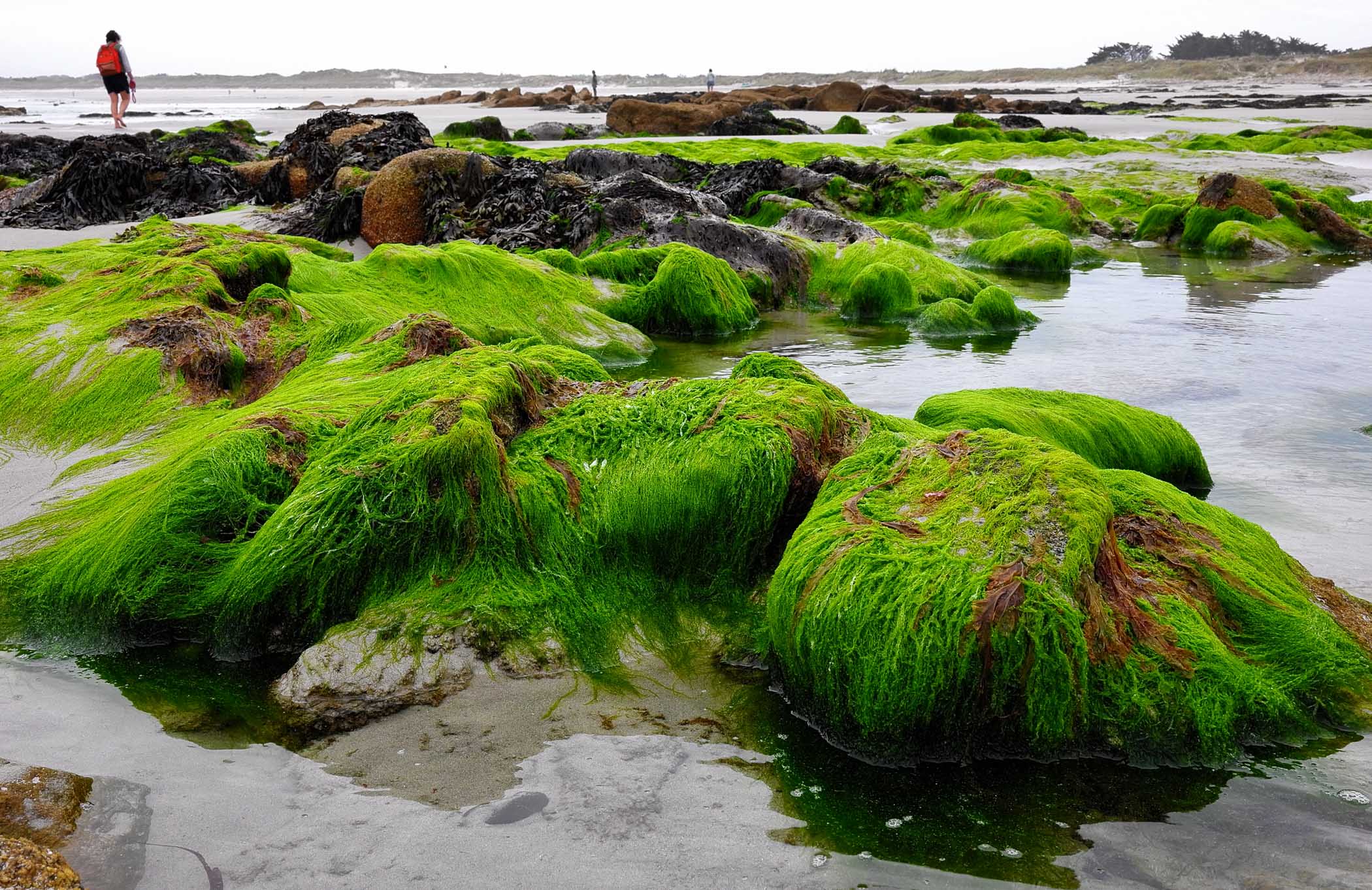
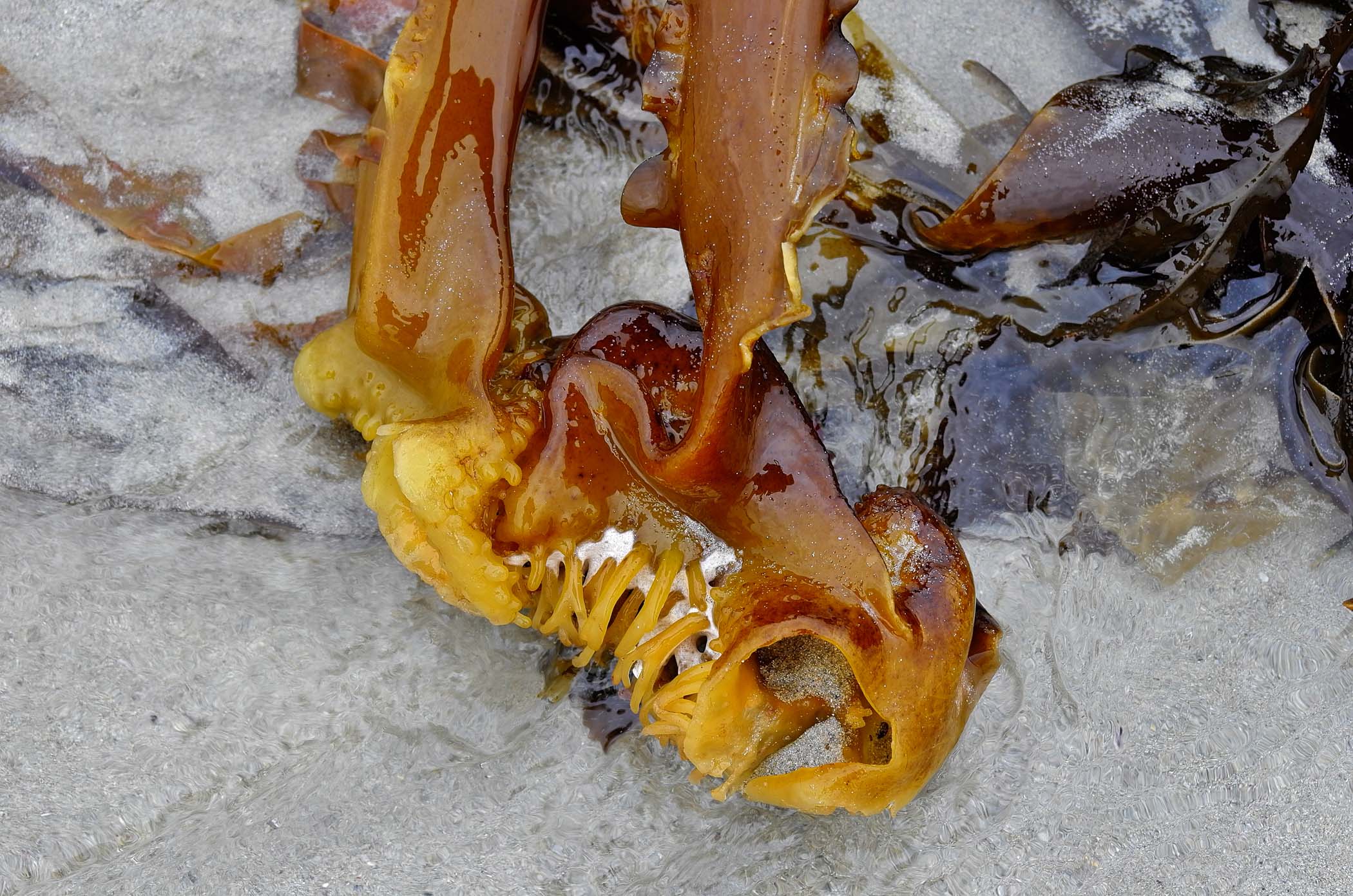
We often had one called “Sea French beans” which we bought at the local factory outlet. They tasted delicious with fish, although it looks like green spaghetti.

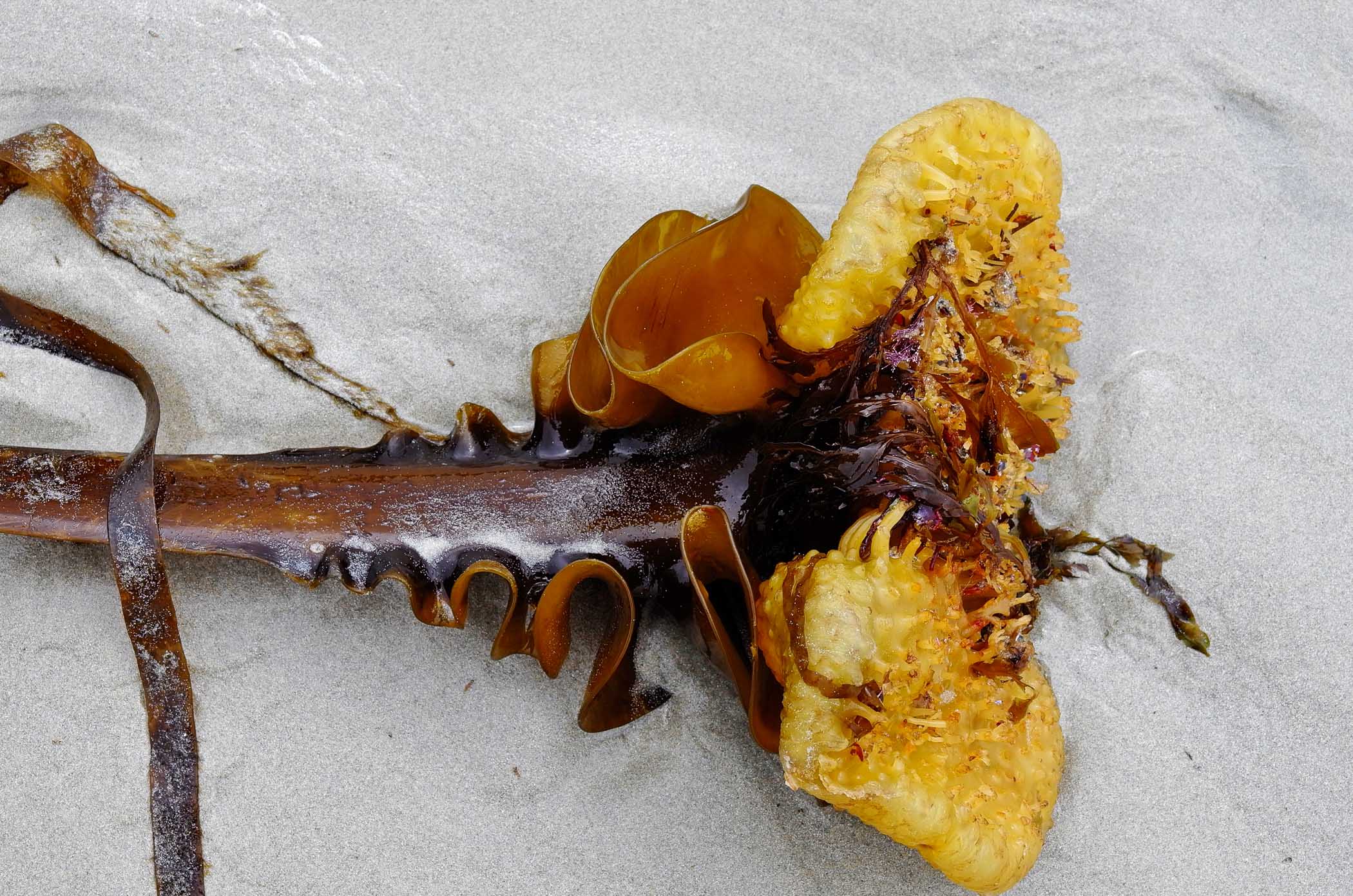
Surfers and divers
The area a mile north of Saint Guénolé in La Cornouaille is truly popular with surfers. Just like beaches in Cornwall, you’re bound to spot surfers and surf schools. Looking at beginners trying to stand on their boards frequently has people bursting out laughing. Occasionally, reflections on wet sand are really graphic. Taking a non-weather-sealed camera to the beach can be dangerous, but if one is careful enough it can still be quite safe.
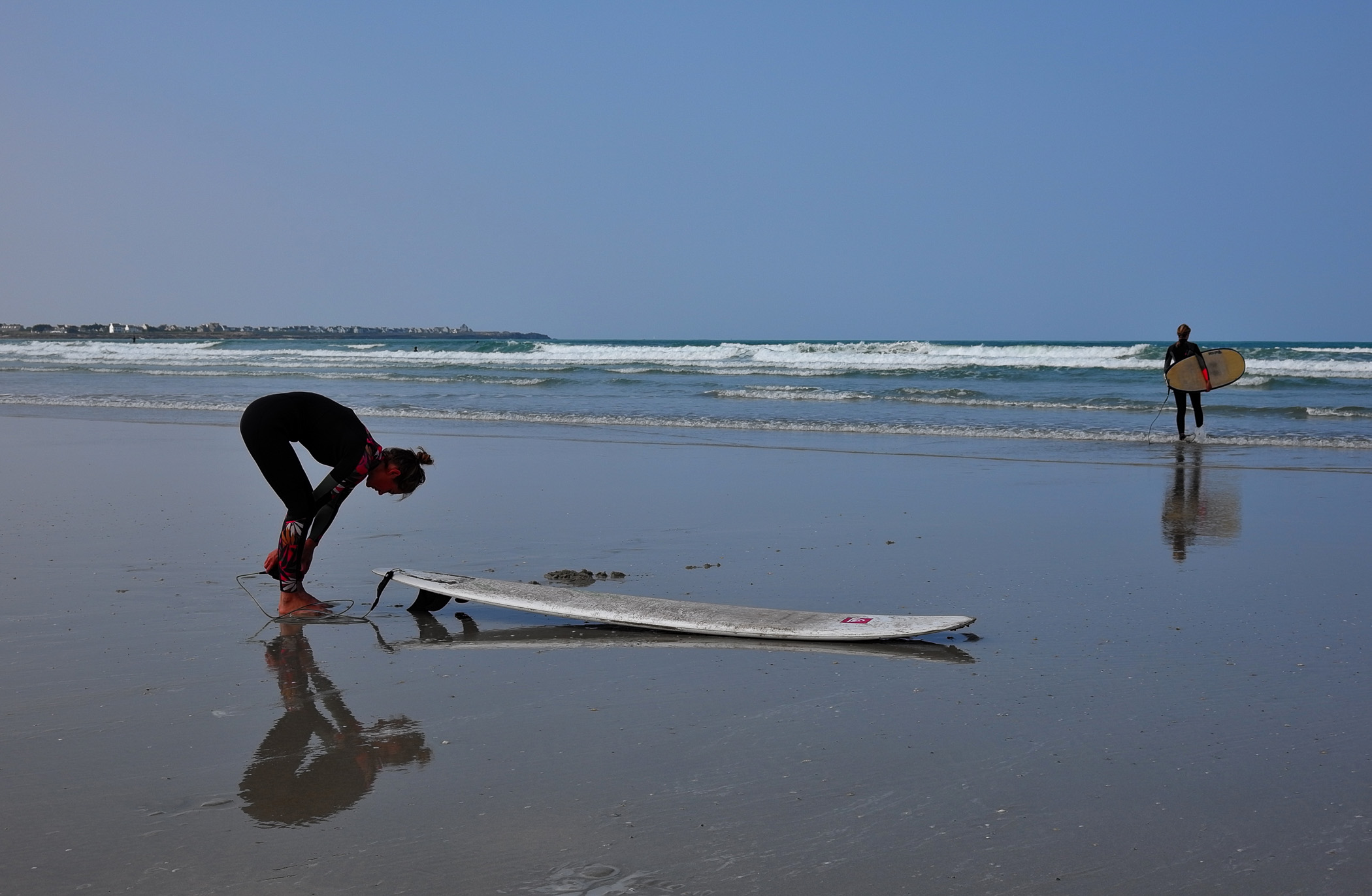
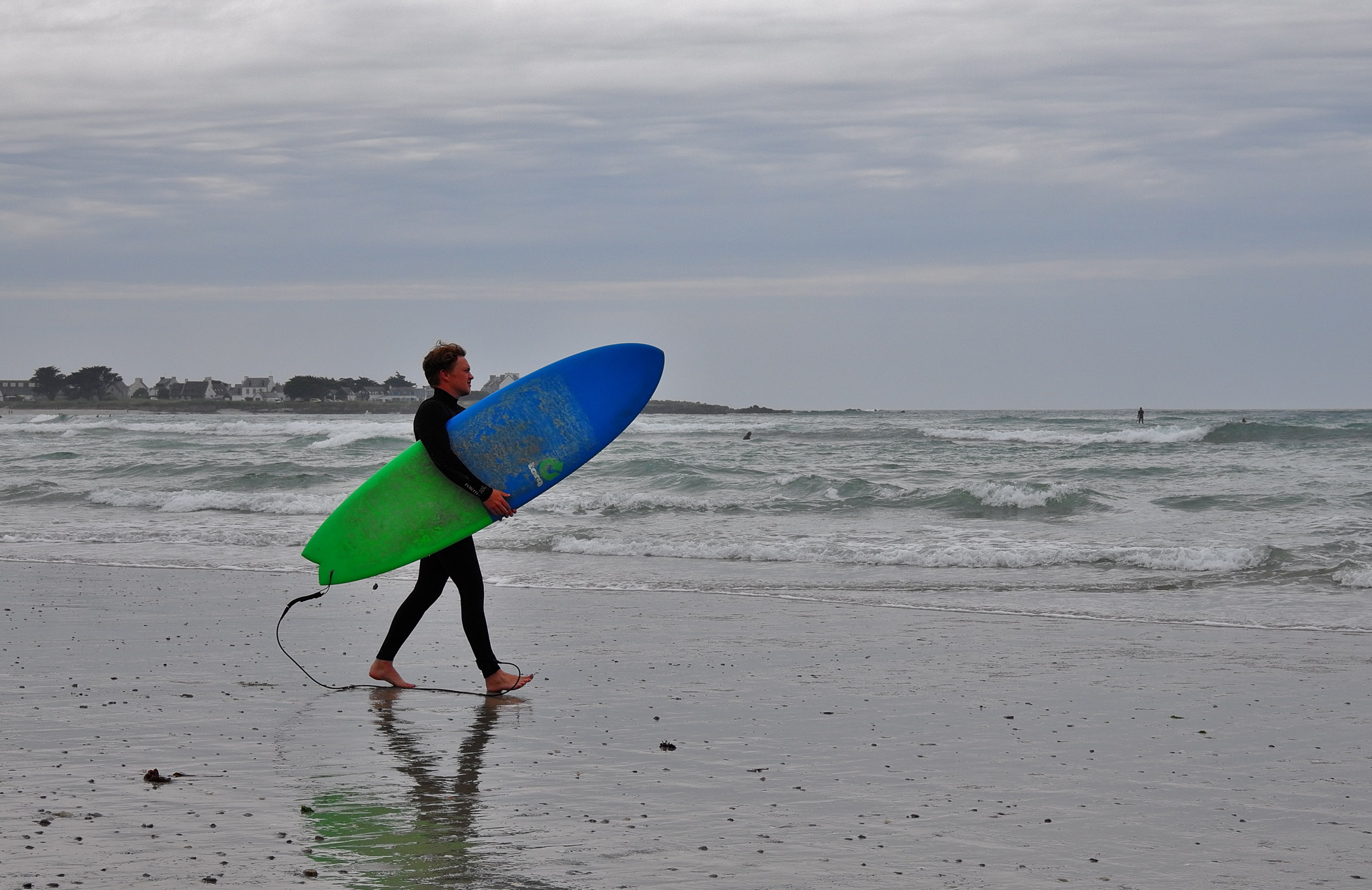
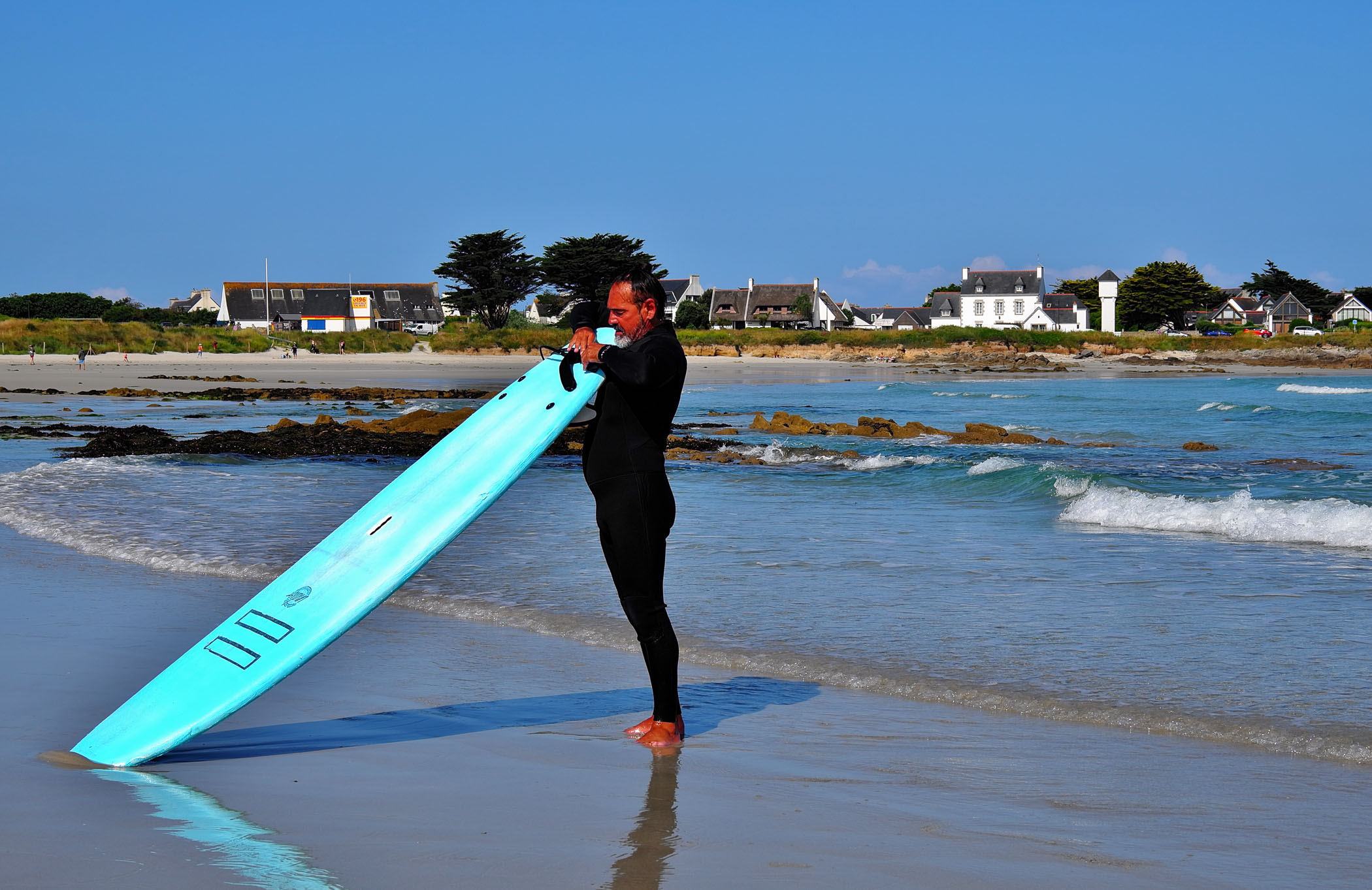
June is a time of rejoicing for students or school-leavers. They either passed their A-level equivalents or graduated from university. The tradition of some young locals is to jump or dive from a particular spot that includes a rocky cliff and a sea wall. They have an audience every evening for their performances. I just stumbled upon them while walking back to the cottage one evening. I was pretty impressed with their daring, but I was worried lest an accident should happen.

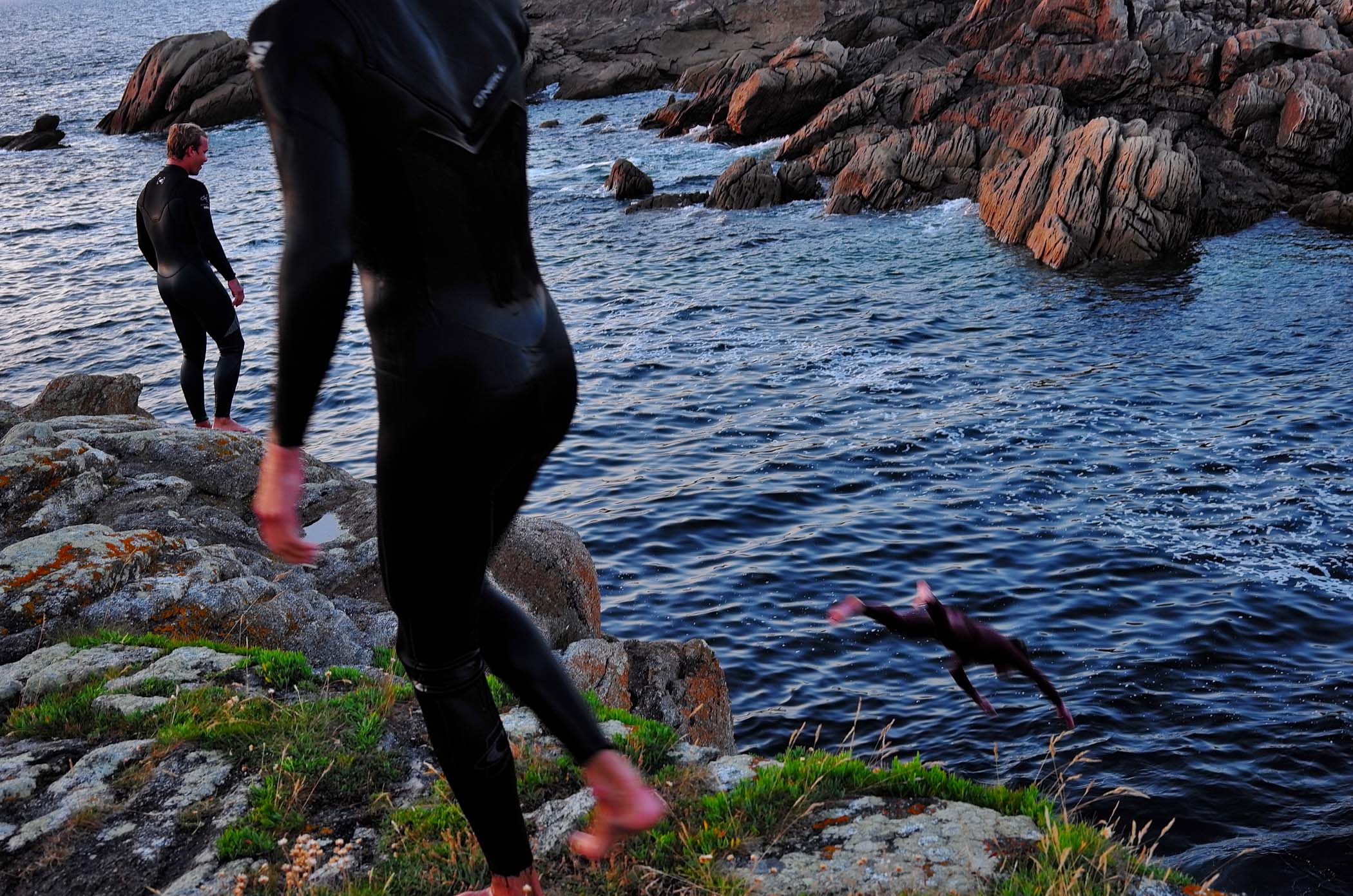
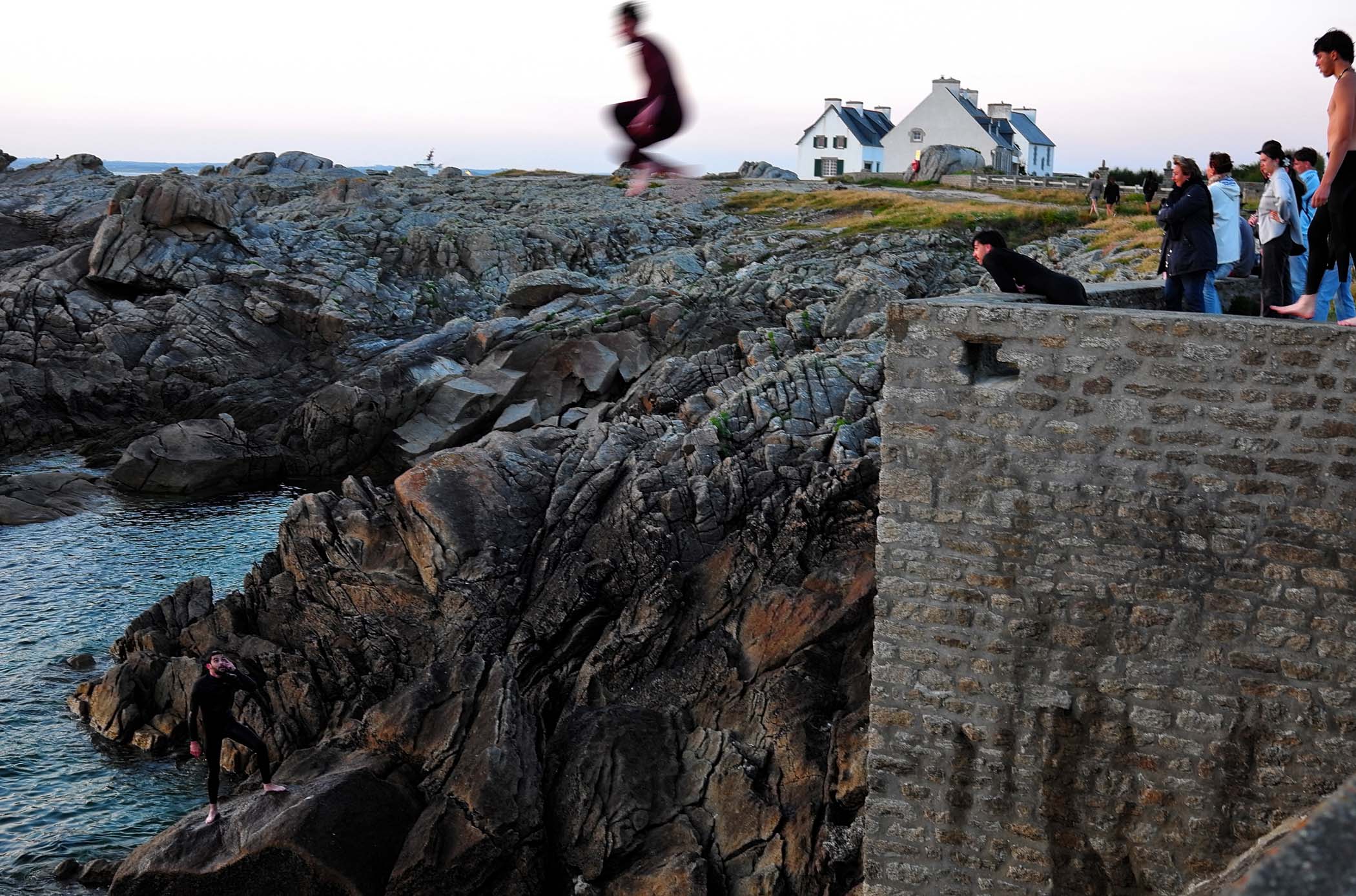
Sunsets in La Cornouaille
Being this far west is a blessing, if you’re not an early riser, and you want to capture some evening light. The way the sun gradually changes, colours the rocks, sand, and houses and then fades into the sea. It is always a pleasure to watch. This is just a selection of a few shots I like.
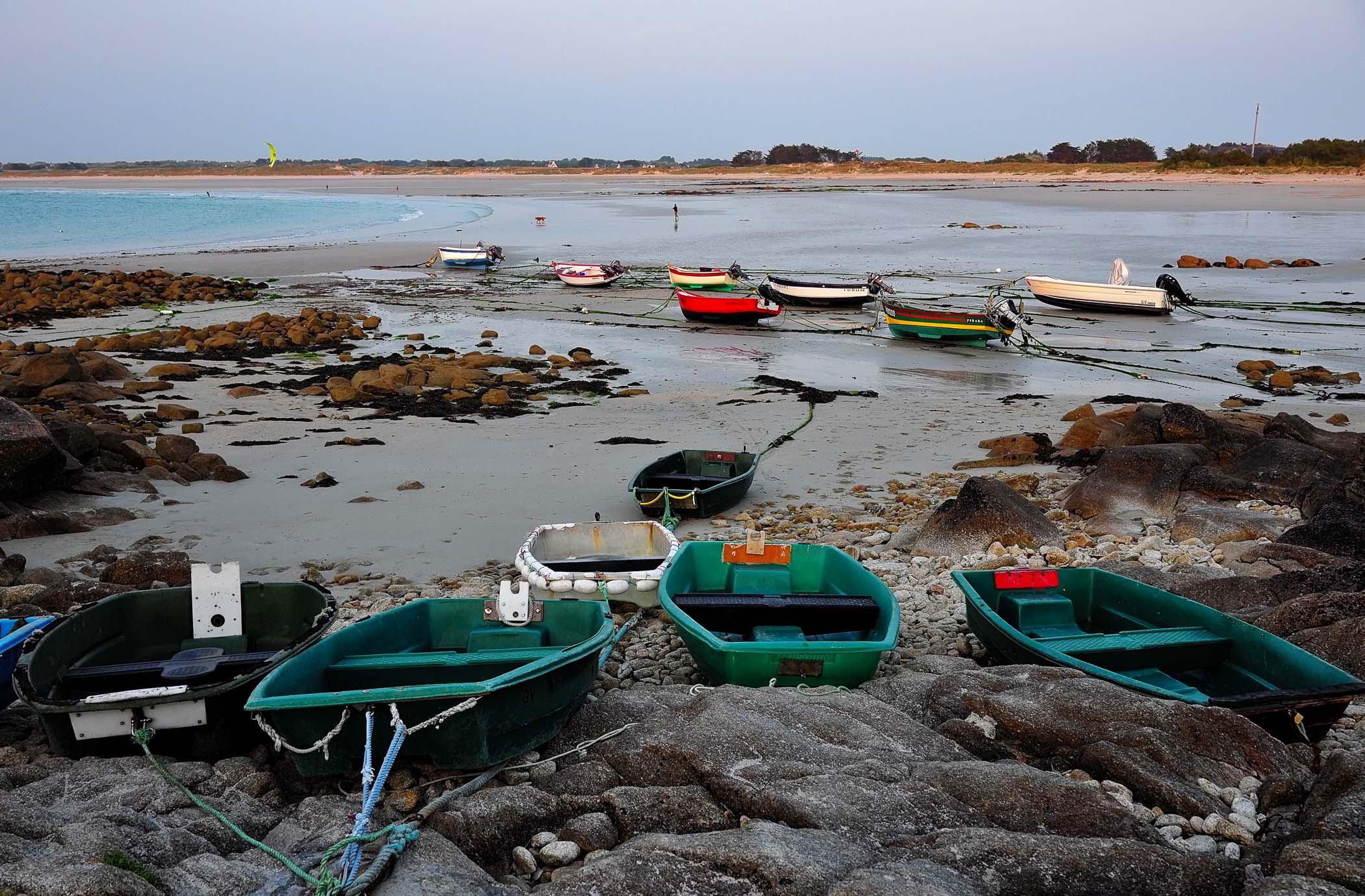
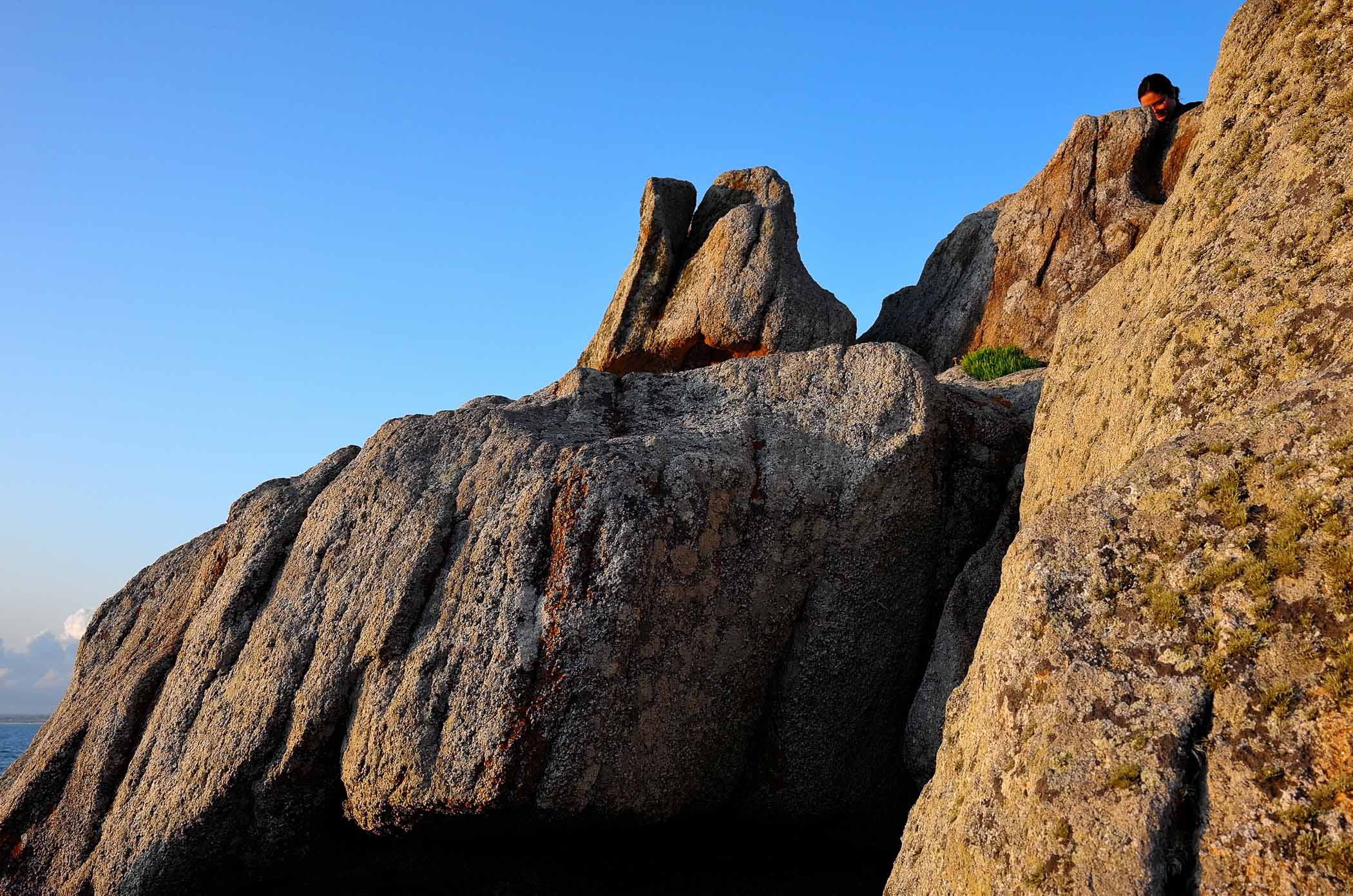
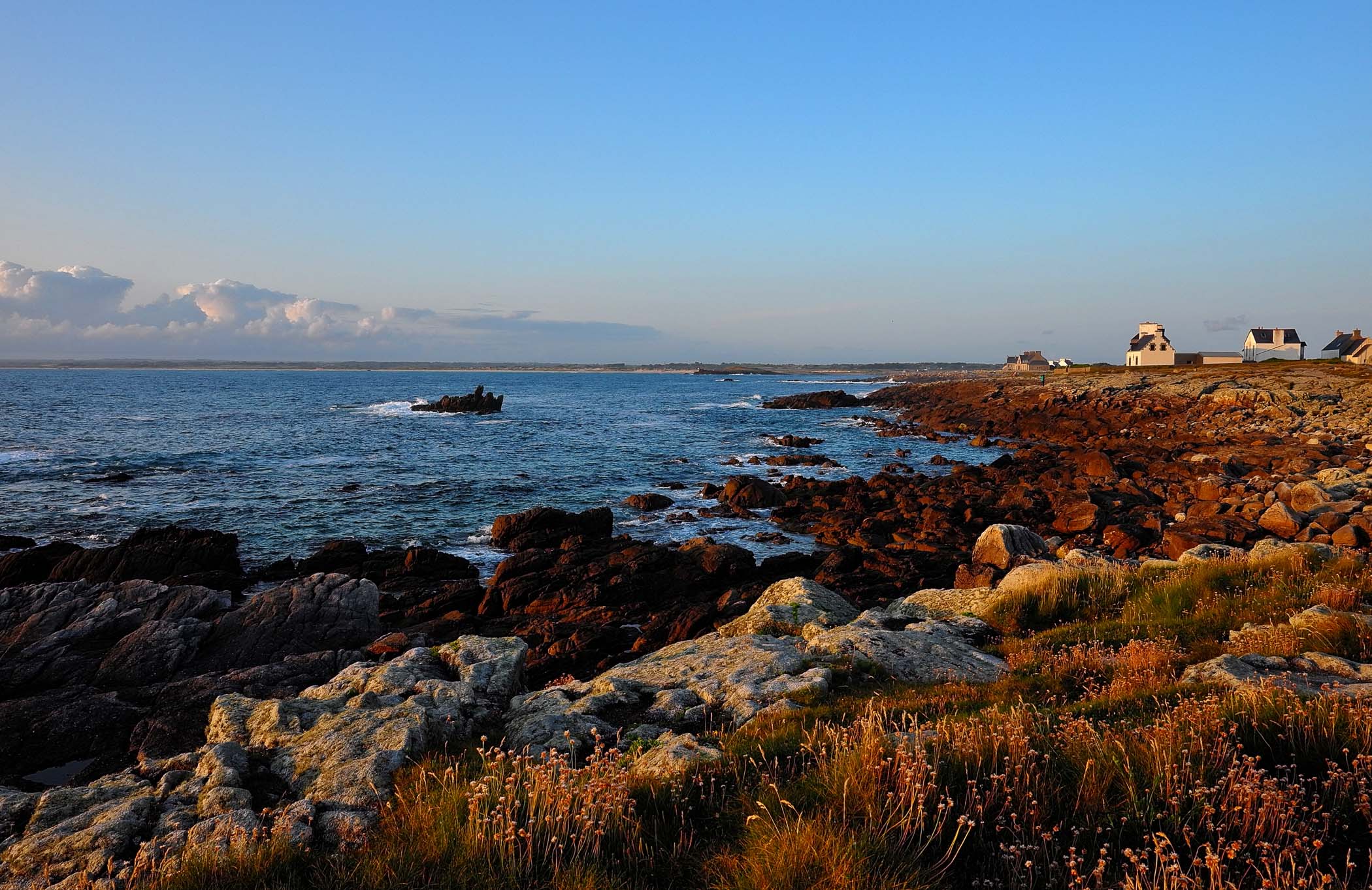
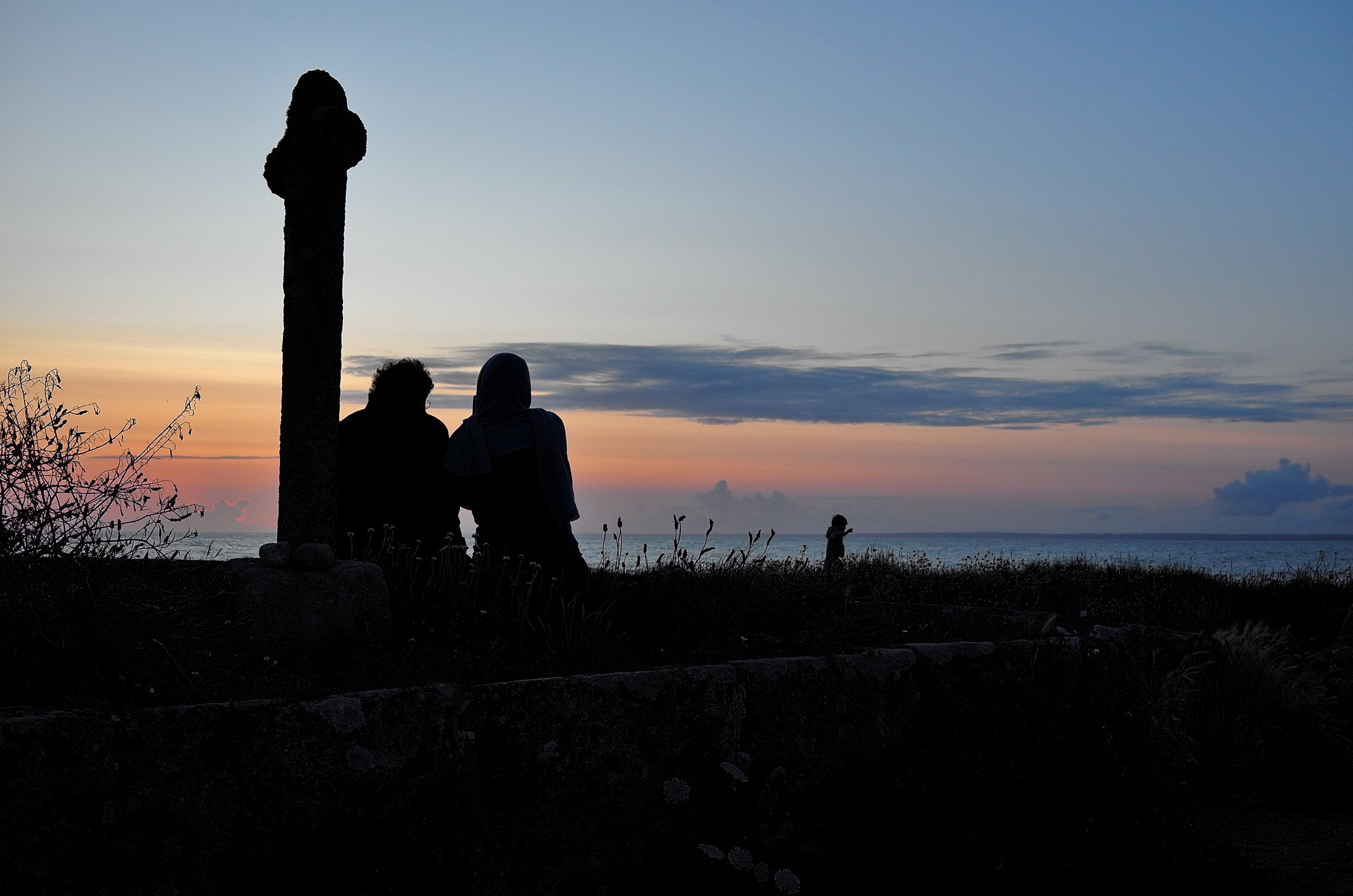
All the images were taken with my X-Vario except one with the X2. I also had one of the latest Xiaomi phones equipped with Leica lenses thanks to their partnership. I mostly use it as a panoramic camera.
More
| Articles by Jean Perenet on Macfilos | More about the Leica X family of cameras on Macfilos |
| La Cornouaille | Brittany |
Make a donation to help with our running costs
Did you know that Macfilos is run by five photography enthusiasts based in the UK, USA and Europe? We cover all the substantial costs of running the site, and we do not carry advertising because it spoils readers’ enjoyment. Every amount, however small, will be appreciated, and we will write to acknowledge your generosity.

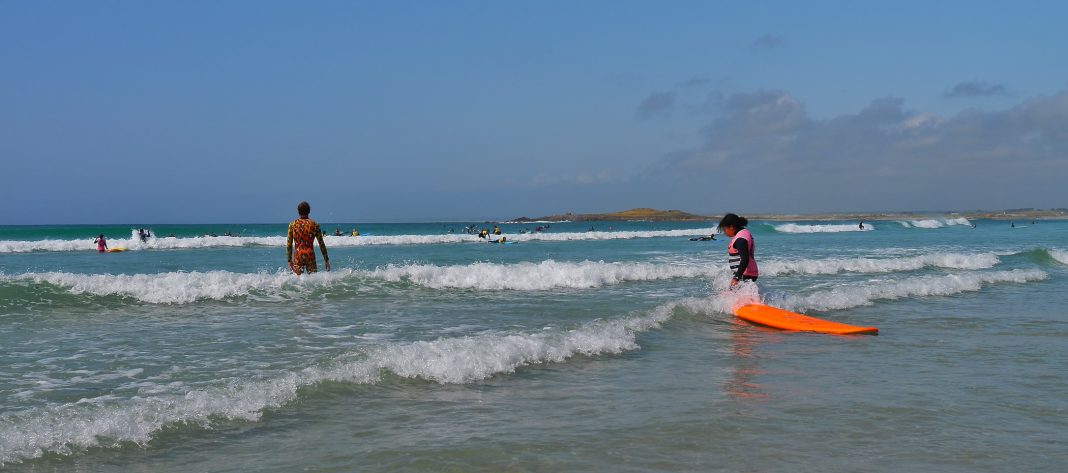
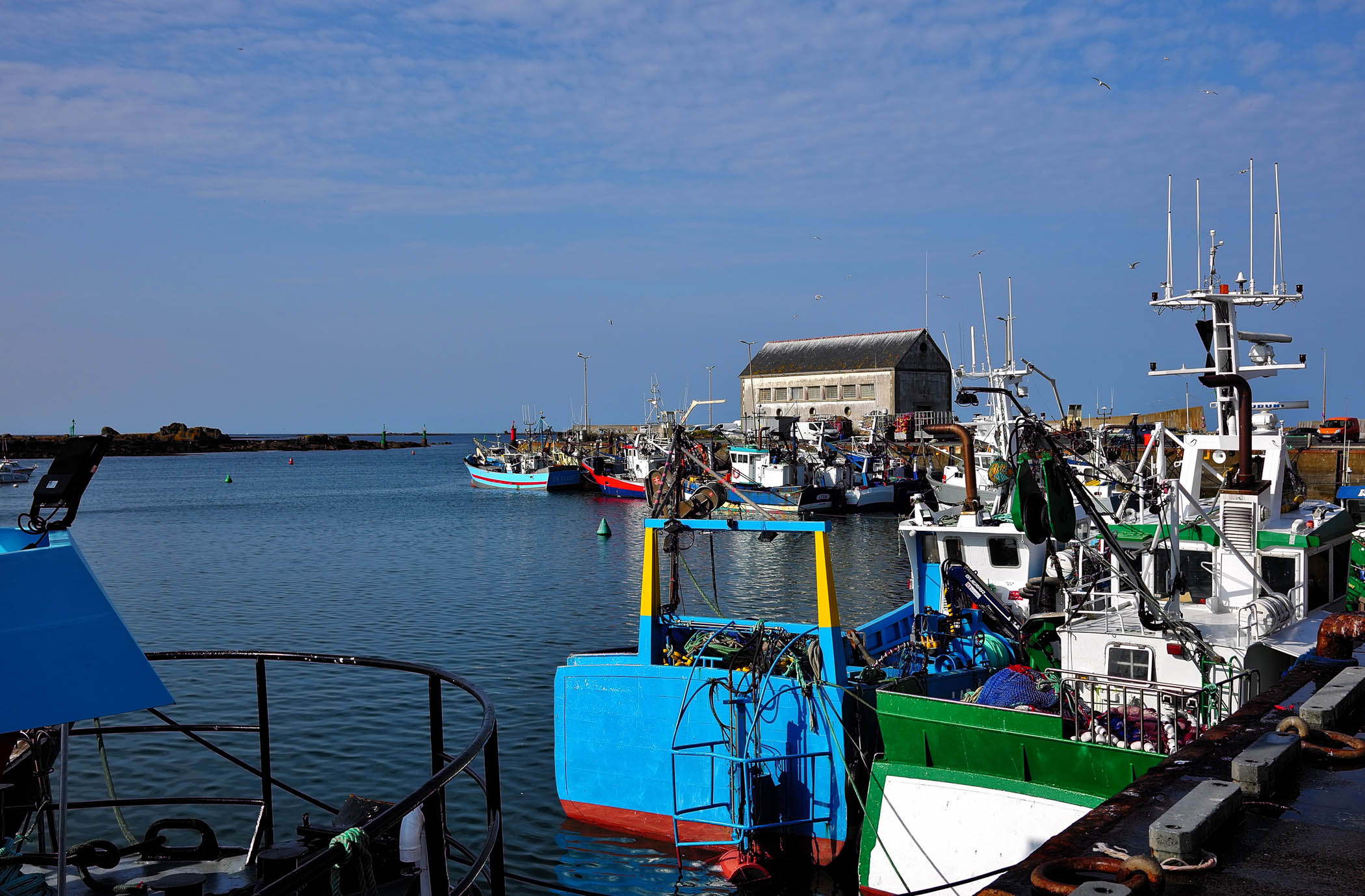
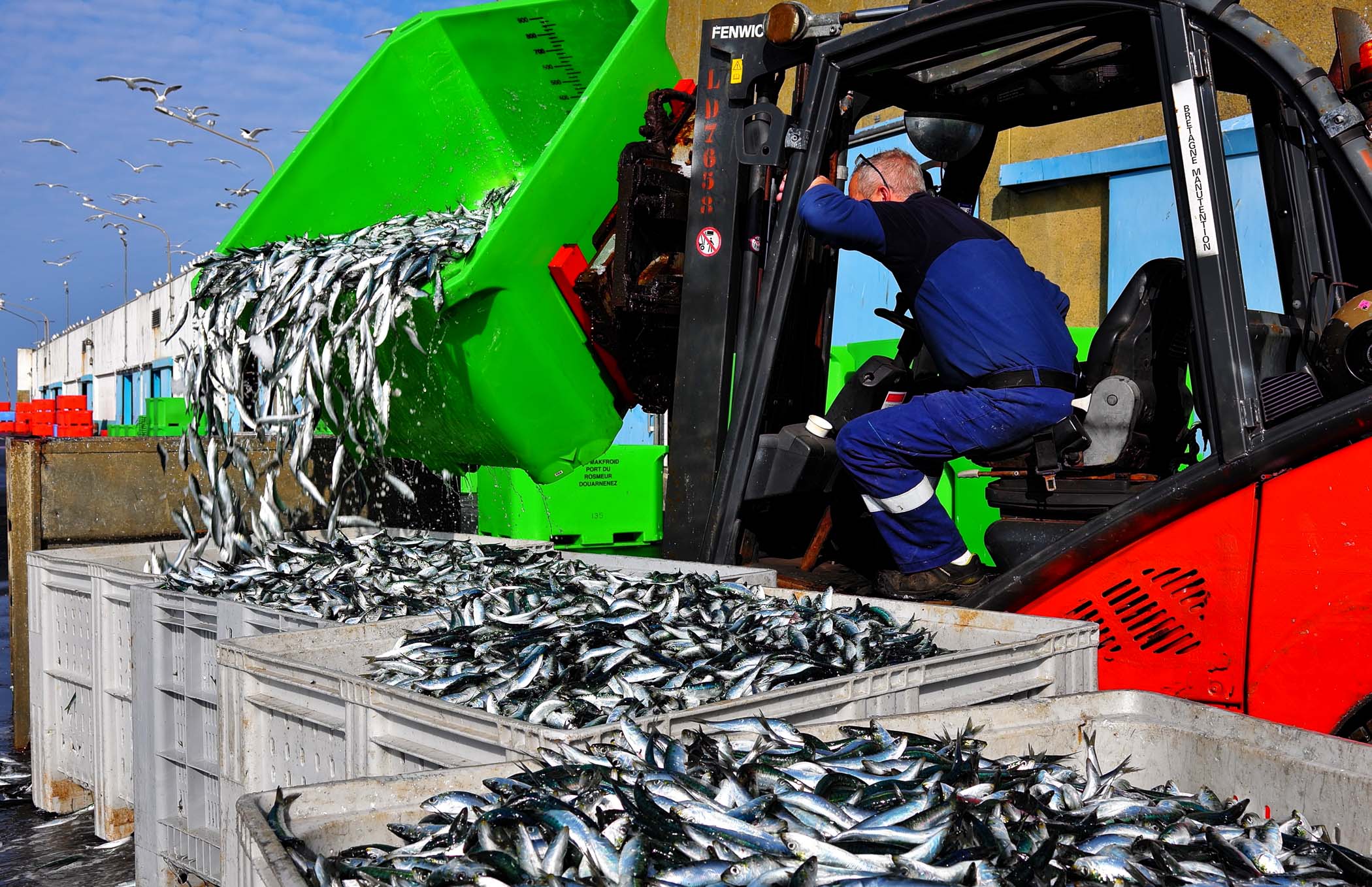
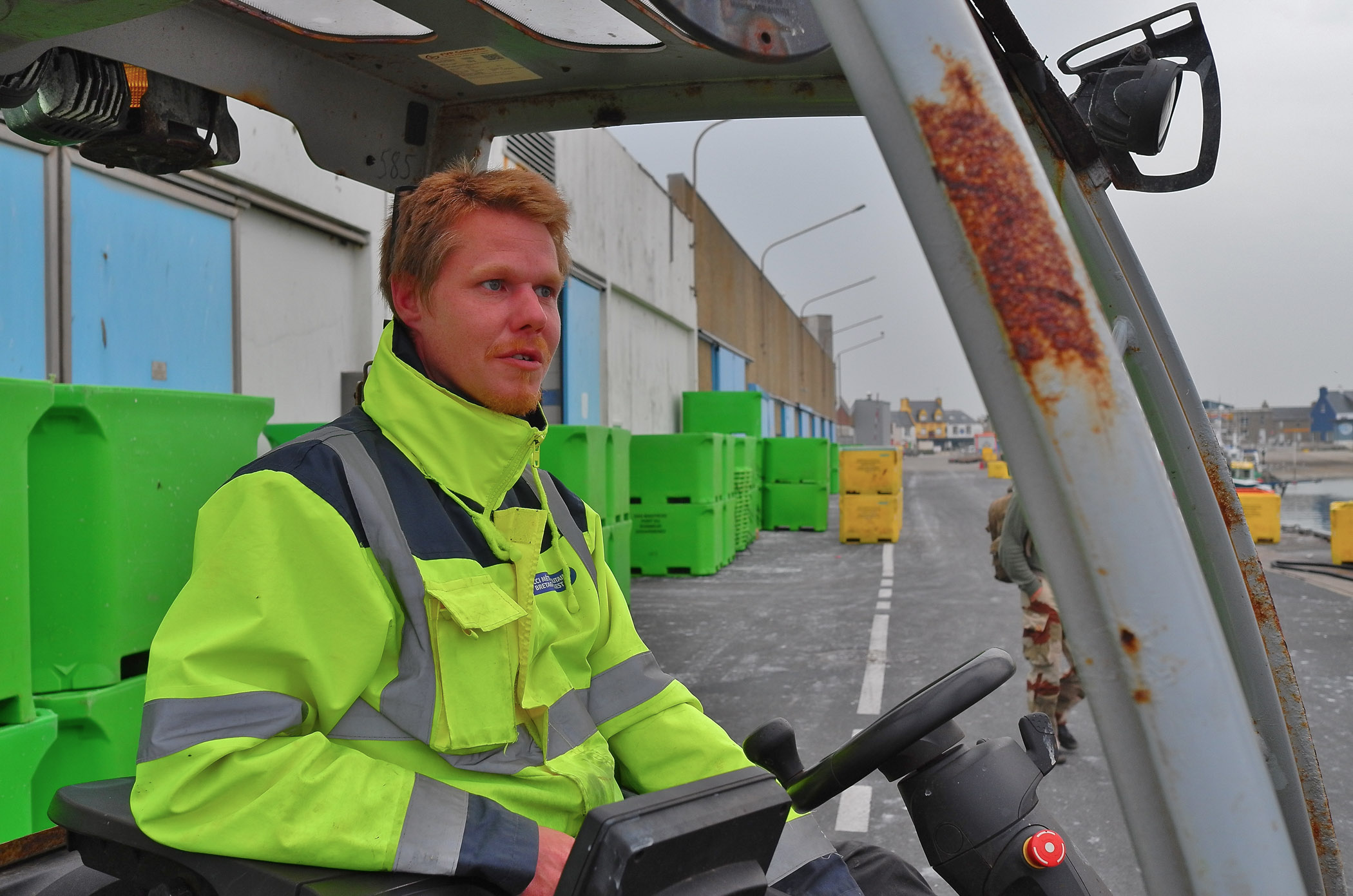
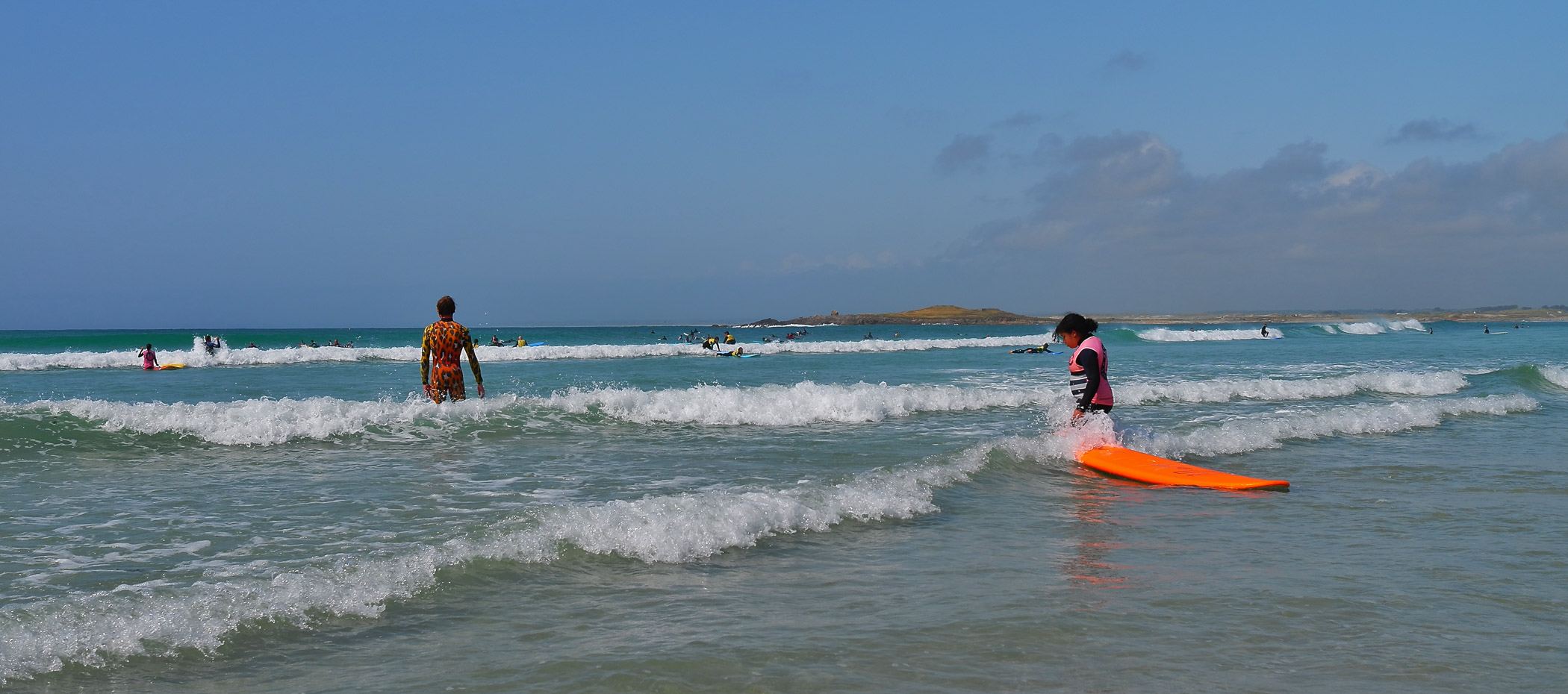
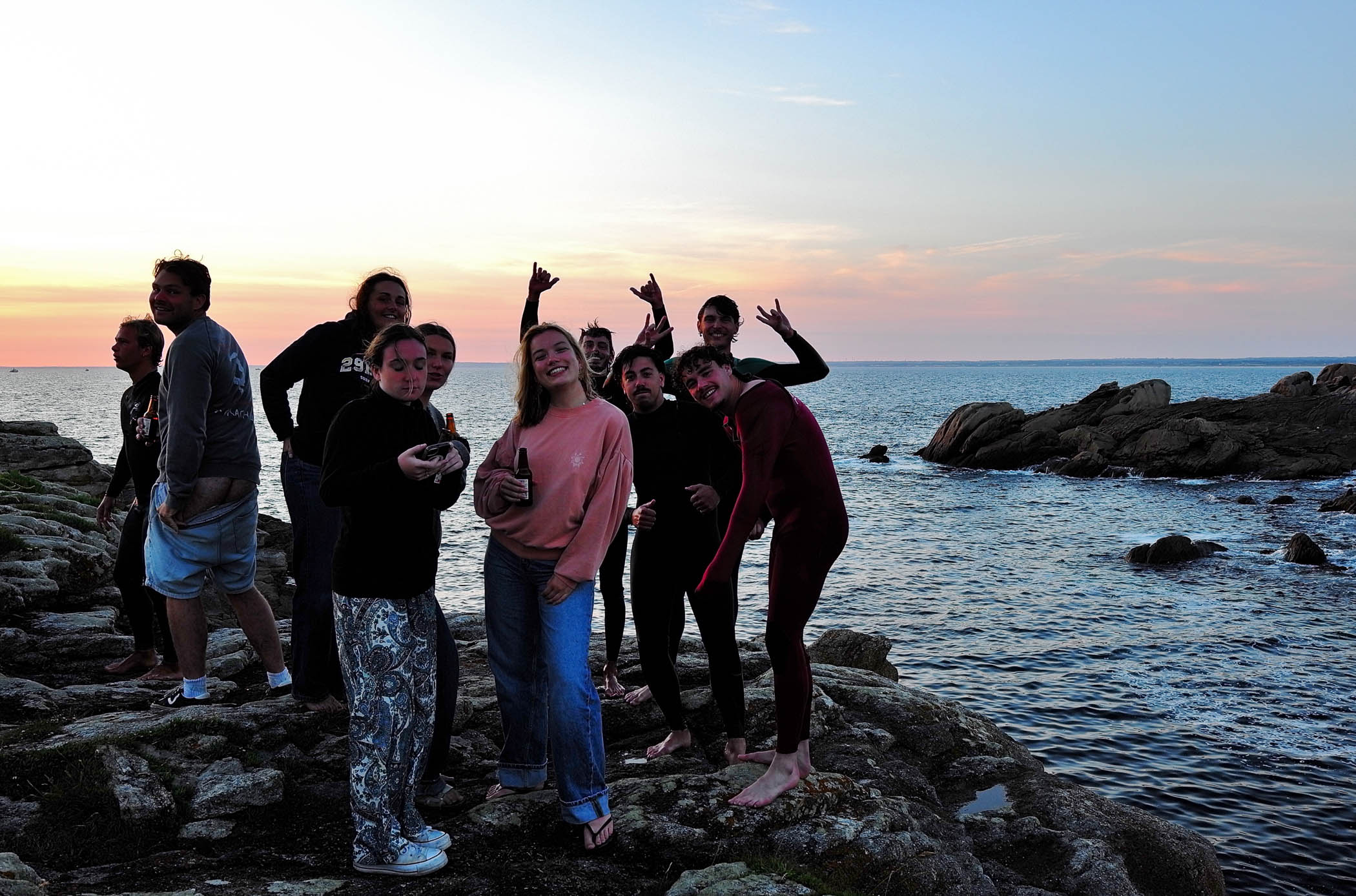
Dear Jean, thank you so much for this inspiring article. I have to visit this places soon! And compliments for you photography. What you are creating with these old Leicas shows two things: It’s the photographer who takes the image. And a good camera stays good even if “better” ones are coming up. Apart from failures caused by ageing, cameras don’t deteriorate whatever the industry wants us to believe. Also in this respect, your article is an important statement. All the best, Jörg-Peter
Thanks Joeg-Peter for your kind comment. I’m not a victim of GAS and enjoy my old tools. I just spend to pocket money on art and photo books. St Guenole is a really nice place and centrally situated if you want to visit la Cornouaille. Did you lay a hand on the old Ricoh 28mm ltm mount for Leica for the Mfiles? Looks like they are pretty rare now
A lovely article Jean, thanks. Interesting about the languages, I worked on Anglesey in North Wales and Welsh was the first language there. I enjoyed your photos of the people jumping into the sea, nicely captured. By the way I’m selling my X1.
Thanks Kevin for the kind comment. Mostly old people mostly speak Breton nowadays. The jumping episode looked quite dangerous. Truly enjoyed your recent article. I’m not selling of my Xs. They’re so good cameras
Very nice. Lots of colour and a good documentary approach. I think you could do a whole project on the sardine situation. “The Last Sardine” would be a nice title, covering the whole process (including staying awake for the return of the boats!).
Thanks Andrew for the kind comment. Light is interesting in this part of the world but not so good as the Highlands and Islands in Scotland. It was our third time in the area. We are unlikely to return there. Anyway if fishermen left the shoals to reproduce without fishing for a couple of years the story of the last sardine would not be necessary.
Thanks Wayne for the kind comment. Light was good and the XV excellent
Good use of light in many of the images. Well done”seen”.
Jean a really lovely article and with images you know I love. Coastal life anywhere on the planet is always nice to see up close, and you have captured it well.
Thanks Dave for the kind comment. The XV is an amazing camera which produces great results. I enjoy shooting by the seaside. Next stop is near Salcombe tomorrow.
Jean
A lovely article and photographs thank you. It brought back memories of my previous family holidays in Brittany. I noticed on Google street view that road direction signs in Saint Guénolé / Sant Wennole were in two languages. Quite a surprise.
Chris
Thanks Chris for the kind comment. Brittany and Normandy are still popular holiday destinations. As for the names of cities and villages they’re bilingual all over Brittany nowadays. Still a nice holiday destination if you can avoir July and August
Jean great pics love the way you write! The last pic is a grabber!
Thanks John for the kind comment. As for my English it’s not so good as it used to be when I was teaching littérature. The good point is that I just read for pleasure.
I think I’ve posted some more images from Brittany in the LFI gallery